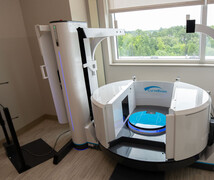If your toes are crooked or stiff, you may have a hammer toe. They may be caused by a sudden injury, chronic instability, an autoimmune disease (such as rheumatoid arthritis), or tight or improperly-sized shoes. Here, Andrew Hanselman, MD, a Duke Health foot and ankle orthopaedic surgeon, explains treatment options.
How is hammer toe treated?
Hammer toes can be treated with stretching exercises, comfortable wide-toe-box shoes, and over-the-counter toe spacers and metatarsal pads, which help keep the toes separated and cushioned so they don’t rub against each other. If your toe is also rubbing up against the underside of your shoe, you can use small pads, found in most drugstores, to cover and protect the toe.
Will I need surgery for hammer toe?
Surgery for hammer toes may be recommended to remove some bone and straighten the toe. A foot and ankle surgeon may also manipulate the soft tissue and move the insertion point of the tendon muscle to make the correction even better. Once the toe is straight, they use a variety of techniques, such as a pin, which stays in the toe for several weeks, to hold the toe straight while it heals. These pins are then removed by the surgeon in clinic with little to no discomfort. The pin technique allows the toe to remains straight with no residual metal left inside your body.
Another technique uses a small metal implant to hold the toe together while it fuses. This is usually permanent, but does not require removal afterwards. Our foot and ankle specialists will recommend the procedure that is right for you after discussing your preference, and the bone quality of your foot.
Is surgery for hammer toe painful?
Surgery for hammer toes is an outpatient procedure; it does not require a hospital stay. Although every situation may be different, the majority of these procedures are performed under a regional nerve block along with anesthesia administered through an IV to help you relax. This allows for a pain-free process while being safer than traditional regional anesthesia. Often, people are able to walk afterwards using a supportive specialized post-surgical shoe or sandal that is provided at the hospital or surgery center.
How long does it take to wear regular shoes and walk normally after surgery?
Most people return to wearing regular shoes around six to eight weeks following surgery. Low-impact activities, such as walking for exercise, may begin at that time. Depending on how quickly you heal, you can typically return to higher impact activities, such as riding a bike or using an elliptical machine, around three months and running/jumping activities around four to six months.




